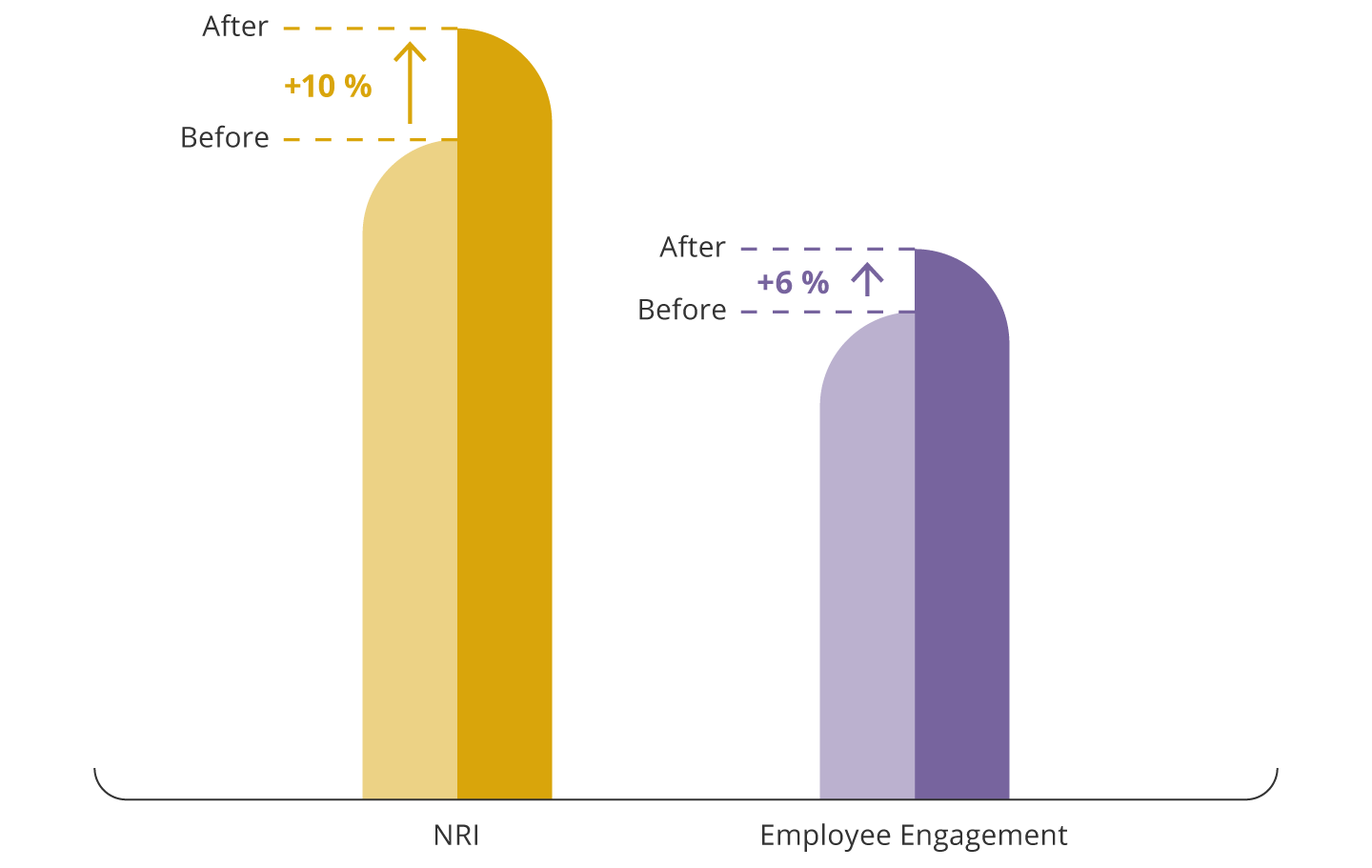Author: Tyler Phillips, Research Psychologist and Lead Content Specialist
There are many ways to group different kinds of employees. Here’s one meaningful way: there are those who ‘just come to work’, and then there are those who are motivated to do their best, who get positively immersed in what they do, and who are dedicated to their organization and its future. There’s a clear distinction between these two kinds of employees. That distinction is their level of job engagement.
Given the characteristics of highly engaged employees — motivation, positive immersion, dedication, and striving for excellence — you can easily see why engagement is highly valuable for the performance of any organization. It means not only that an individual employee should perform better than their less-engaged peers, but that they should be more instrumental in strengthening team cohesion and team engagement — which should then demonstrate even more impactful business outcomes.
Indeed, with decades of research, Gallup has confirmed this relationship. But they’ve also confirmed that, globally, only around 15% of employees at a given organization are truly engaged. The pressing question then becomes: how do we increase employees’ levels of engagement?
In our own research at Neurozone, we’ve found one possible answer: enhancing employee resilience. Using data from roughly 600 people (balanced in their gender distribution) across approximately 18 different industries, we have found a promising relationship between the Neurozone® Resilience Index (NRI) and Employee Engagement. It is this:
A one unit increase on the NRI tends to result in a 0.6 unit increase in Employee Engagement. This means that, where both measures range from 0 to 100, if an employee initially scores 60 on the NRI and 44 on our Engagement measure, a subsequent 10-unit increase to 70 on their NRI is likely to result in a 6-unit increase to 50 on the Engagement measure.
 One of Neurozone’s key endeavors is to uncover through continuous research which behaviors, when cultivated, are associated with improving resilience on the NRI. Based on the graph above, some of these behaviors may also be associated with an increase in employee engagement. A promising example comes from a global study by the ADP Research Institute. It found that strengthening employees’ trust in their team leaders is one of the key factors to enhancing their engagement at work. As it happens, cultivating a sense of trust amongst team members (Trust in Team) is one of the behaviors in the Neurozone system that, when cultivated, has shown promise for enhancing resilience.
One of Neurozone’s key endeavors is to uncover through continuous research which behaviors, when cultivated, are associated with improving resilience on the NRI. Based on the graph above, some of these behaviors may also be associated with an increase in employee engagement. A promising example comes from a global study by the ADP Research Institute. It found that strengthening employees’ trust in their team leaders is one of the key factors to enhancing their engagement at work. As it happens, cultivating a sense of trust amongst team members (Trust in Team) is one of the behaviors in the Neurozone system that, when cultivated, has shown promise for enhancing resilience.
Whatever the behaviors required, getting better at adapting to challenges, overcoming stresses, and learning in the process — that is, at being resilient — seems to help us get more motivated, dedicated, and energized for individual and collective excellence at work.